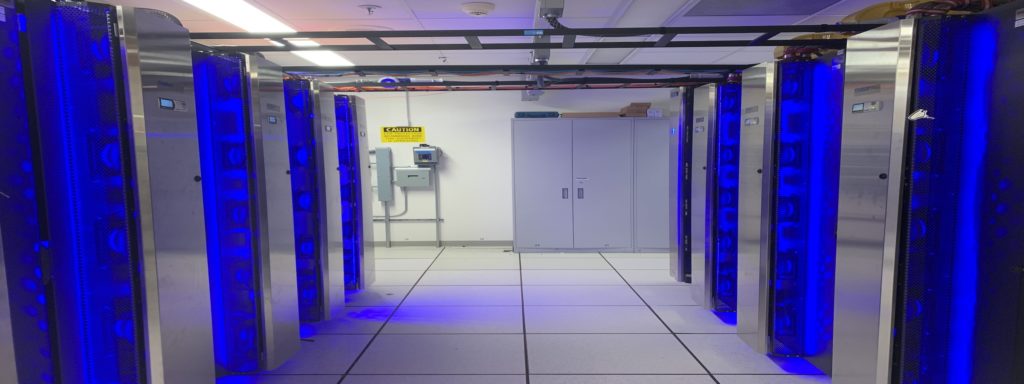
Lawrencium is a shared computing cluster available for use by all Berkeley Lab researchers and their collaborators for scientific research. All research projects on Lawrencium have access to a comprehensive set of computing resources, GPU-based and large memory servers, and a multi-petabyte, high-performance parallel file system for short-term storage.
Lawrencium is available to LBL staff through three mechanisms:
- PI Compute Allowance (PCA) – Lab researchers can apply for a free grant of 500K Service Units per LBL PI per year.
- Users can purchase additional Lawrencium resources on-demand for $0.01 per Service Unit (processor core-hr). Pricing details can be found here.
- PIs can supplement these shared nodes by purchasing additional servers, and become Lawrencium owners. By investing in the cluster, their research groups not only receive priority access to the number of nodes they purchase, but also get access to all of the other owner compute nodes when they’re not in use, thus giving them access to the whole breadth of Lawrencium resources.
Why should I use Lawrencium?
Using Lawrencium for your work provides many advantages over individual solutions:
- Scientists can focus on their research instead of running a system.
- On Lawrencium, simulations and workloads benefit from performance levels that only large scale HPC systems can offer: high-performance I/O infrastructure, petabytes of storage, large variety of hardware configurations including GPU accelerators, and professional system administration provided by the Lab’s Scientific Computing Group
- Lawrencium is hosted in the Lab’s main datacenter that has been upgraded to provide power and cooling sufficient to handle today’s high density HPC systems. A typical compute rack holds 72 nodes, can weigh almost 3000 lbs, and draw over 43kW when operating!
- Purchasing and operating your own HPC require both significant initial investments and recurring costs in both equipment and data center facilities. Using or purchasing equipment for Lawrencium allows researchers to avoid most of those costs and benefit from economies of scale, as well as to access larger, professionally managed computing resources that what would not be available on an individual or even departmental basis.